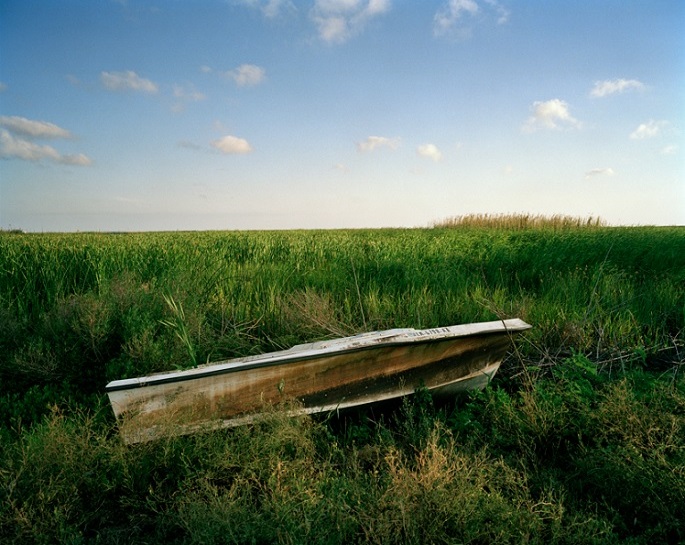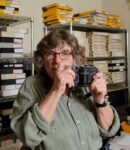
Nell Campbell
American, 1946-
Little Chenier, Louisiana, 2012, printed 2021
chromogenic print
35 × 44 in.
SBMA, Funds provided by Beth Gates-Warren and Bob Boghosian
2021.4

Nell Campbell photo (SB Independent)
“I have a cultural and historical life connection to the geography of Louisiana, much stronger than to Californian geography, even though I’ve lived here longer. I think where you grow up has a different meaning.” - Nell Campbell
COMMENTS
Two major themes — the documentation of Louisiana and political activism and protest — run throughout Campbell’s photographs, a body of work spanning more than 40 years. Her photographs give voice and form to life in the margins.
In Campbell’s words: “I have been motivated by subjects concerned with cultural representation and issues of social justice.” Her work spans anti-war demonstrations from Vietnam to Iraq; LGBT Pride parades and marches across the country (an ongoing project begun in 1977); and portraits of campesinos at work in the tobacco and sugar cane fields of Cuba.
“None of these projects are acute incidents but rather subjects I have been documenting over a period of years.” In many ways, her longest-standing documentary subject has been her home state, Louisiana.
Campbell has been based in Santa Barbara, California, since attending the Brooks Institute of Photography, but she has returned home to Louisiana throughout her career, producing a six-year study on Mardi Gras in New Orleans; a series of panoramic landscape photos of the wetlands in southwestern Louisiana; documentation of the aftermath of hurricanes Katrina and Rita; and a 14-year photo project on duck blinds along the Calcasieu River and its adjoining bays …
Campbell grew up in Lake Charles, Louisiana, and spent much time as a child on the Calcasieu River and its tributaries. It’s a body of water she knows intimately. “When I was 5, my mother took me fishing on the banks of the West Fork of the Calcasieu and let me fish all day with an unbaited hook because she couldn’t bear to touch the worms — worms that she and I dug up from under the branches of the oak tree in our backyard,” Campbell recalls. “I know all the bends and turns of this river from water-skiing as a teenager and from crossing it on the small West Fork ferry as a child and from crabbing on the Calcasieu, catching the crabs we added to our gumbo supper.” …
The deep tones and rich hues of Campbell’s photographs, their supreme sense of stillness, heighten a sense of discovery for the viewer.
An inventive interplay with nature, borne out of necessity, translates into a time-honored tradition that is aesthetically more sophisticated and enriches the cultural and physical landscape of Louisiana … A discussion surrounding the politics of visibility has always been present in Campbell’s work — she finds life on the fringes and puts it center frame — however, in this body of work, it’s almost with an ironic twist, given the purposefully concealed nature of her subject.
https://readelysian.com/shooting-blinds/
SBMA CURATORIAL LABELS
Santa Barbara-based artist Nell Campbell found this scene in the Little Chenier area of southwestem Louisiana, about 20 miles south of Lake Charles where she grew up. She first saw this section of a boat lodged into dry land in 2005, then came upon it on a drive after Hurricane Rita hit Little Chenier only three weeks following the devastation of Hurricane Katrina. Returning in 2012, Campbell found this piece of boat still there. Here she pictures the facts of object, time, and place, but questions arise about how this small section of a vessel became embedded in this field of vegetation. Campbell's photograph offers subtly charged evidence of the harsh power of nature. which has only increased with the effects of climate change in the ten years since the artist stopped to capture this quizzical scene.
- A Time of Gifts, 2022
